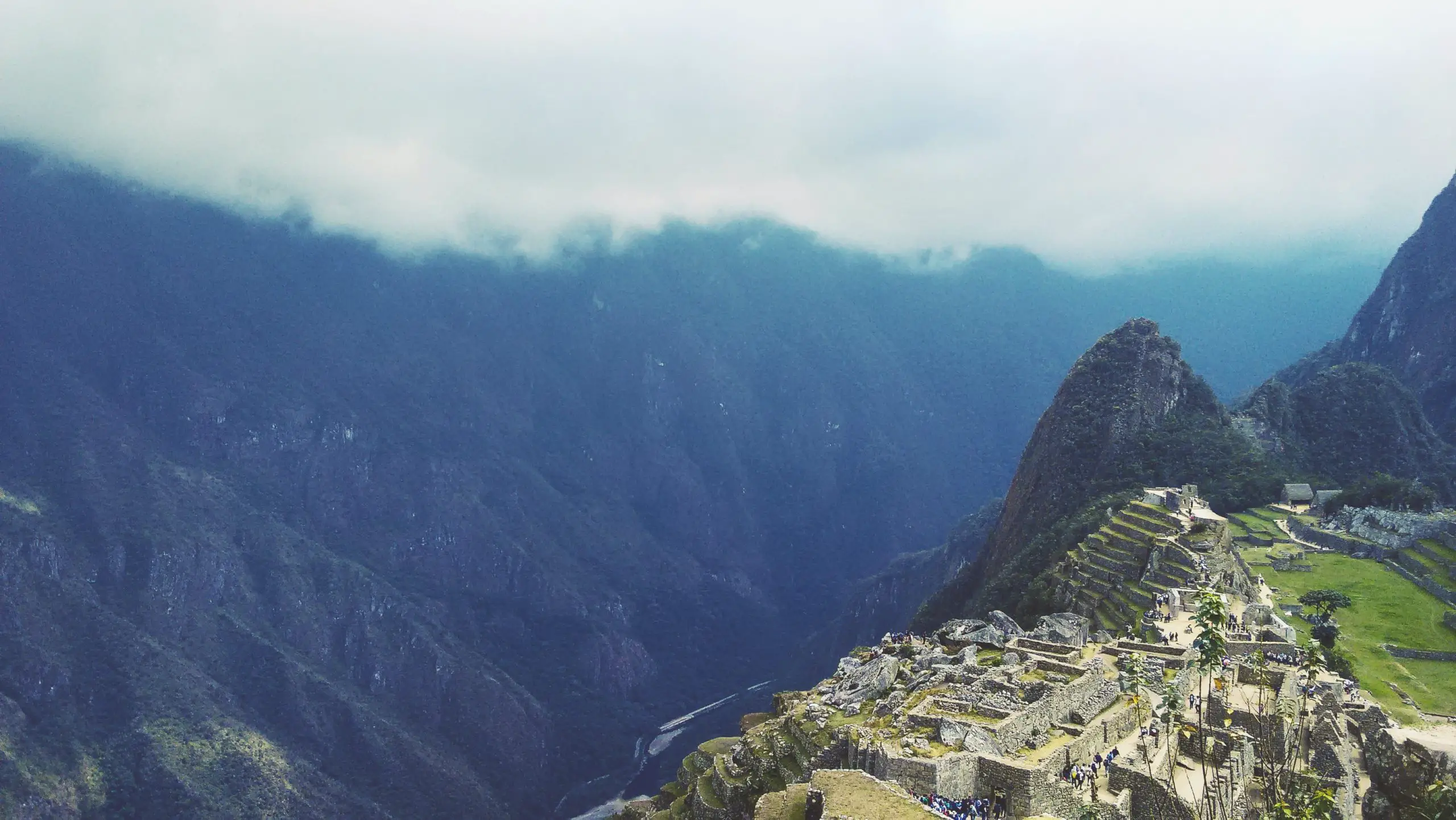Machu Picchu ‘s past has intrigued and mystified archeologists and historians since Hiram Bingham returned the site to global consciousness in 1911. The Incas, declared a UNESCO World Heritage Site in 1983 and one of the New Seven Wonders of the World in 2007, continues to captivate today. Any interesting Machu Picchu facts and figures.
Table of Contents
Who Discovered Machu Picchu?
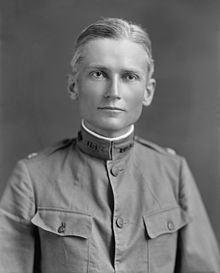
Machu Picchu ‘s discovery is controversial. Hiram Bingham generally receives credit for the Incas’ Lost City discovery, but his 1911 expedition is subject to much debate. Local indigenous people knew about the site’s presence before Bingham’s arrival, although other outsiders may have reached the site before 1911, albeit with less than scientific intentions.
In 1916 a German mining engineer called Carl Haenel wrote a letter to the Times newspaper. In it, Haenel claimed that he had accompanied fellow German J.M. von Hassel to Machu Picchu in 1910 – one year before Hiram Bingham. No proof of the expedition was given, and the claim lies largely unfounded.
A stronger claim was to emerge, centered on the English Baptist missionary Thomas Payne. Payne lived in Peru from 1903 to 1952, and while no direct statement exists from Payne himself, others have claimed on his behalf that he visited Machu Picchu in 1906.
The strongest proponent of this claim was William W. Evans. Evans claimed to have met Payne in Peru in 1920, and that Payne related the story of his own trek to the Lost City five years before Hiram Bingham. Evans also stated that it was Payne, who ran a Mission in Cusco at the time, who told Bingham where to find Machu Picchu.
American researcher and author Daniel Buck, in his article “Fights of Machu Picchu”, while not dismissing the Payne claims, states that “No contemporaneous evidence has ever surfaced to substantiate the Payne claim, nor has any reference to Payne, who died in 1967, appeared among the Bingham papers” (South American Explore, no. 32, January 1993).
The Hiram Bingham Machu Picchu Discovery
Hiram Bingham was an American professor and explorer, often said to have been the inspiration for Steven Spielberg’s fictional Indiana Jones. While not a trained archeologist, his interest in the ruins of South America was piqued on a trip to the continent in 1908.
He returned to Peru in 1911 with the Yale Peruvian Expedition. Arriving in Lima, Bingham studied the centuries old chronicles of Fernando de Montesinos and Antonio de la Calancha. The texts both inspired and informed Bingham, and he headed to Cusco in search of the lost cities of the Incas.
From Cusco to Machu Picchu
Hiram Bingham led his team from Cusco along the Urubamba Valley, travelling on foot through the jungle. Setting up camp by the river, Bingham and his team were approached by a local Quechau indian farmer by the name of Melchor Arteaga. Arteaga told of an old Inca complex up on a ridge near the camp.
The following day, 24th July 1911, accompanied by Arteaga and Sergeant Carrasco, Bingham’s interpreter and guide, Hiram Bingham began the trek to the ruins. What he found would make him the toast of nations: Machu Picchu, the Lost City of the Incas.
Machu Picchu Facts and Fables – Debate Continues Today
In 2008 another claim emerged, this time supported by some thorough research. American historian Paolo Greer found evidence that a German by the name of Augusto R. Berns had set up a sawmill business near the foot of Machu Picchu. The business, he claims, was a front for the looting of Inca gold and relics from the Lost City, with Berns exploiting the wealth of the ruins from as early as 1867, over forty years before Bingham arrived.
More controversially, Greer states that the Peruvian government was aware of the situation and taking a 10% cut. The new findings were reported in The Independent online on 2nd June 2008, archaeology correspondent David Keys stating that “His (Berns’) company, the aptly-named Companhia Anonima Explotadora de las Huacas del Inca (the Inca Sites Exploitation Company) had the backing of some of the most important people in Peru, including the country’s president at the time, Andres Avelino Caceres”.
Greer has since started an international search for the looted and now lost treasures, hoping that a list of Berns’ former business contacts will lead the way.
Hiram Bingham – Machu Picchu’s Scientific Discoverer
Today, Peruvian authorities label Hiram Bingham as the “scientific discoverer” of Machu Picchu. This is a fair conclusion. Hiram Bingham deserved the credit he received; he set out to find the Lost City of the Incas and he accomplished his goal. More so, he did it in the name of discovery; he did not loot the site nor did he fail to recognize the importance of what he had found.
Machu Picchu had never truly been lost, it had only been forgotten. Locals knew of its existence when Bingham arrived. What Hiram Bingham accomplished was the rediscovery of Machu Picchu for the outside world and for the world of scientific and historical study.
When Was Machu Picchu Built – And Why?
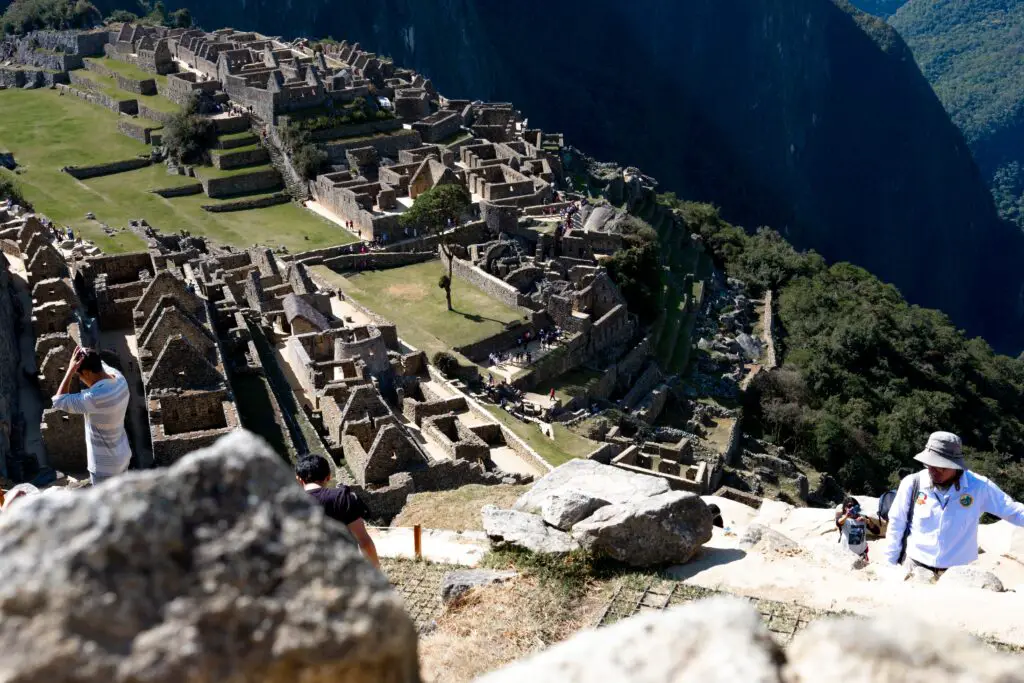
Machu Picchu’s age is uncertain. However, it is thought to have been founded sometime during the mid-1400s, possibly during Inca Yupanqui ‘s rule, also known as Pachacuti or Pachacutec. The reason Machu Picchu was established was the subject of much discussion, and Hiram Bingham’s Machu Picchu theories were not the test of time. According to historian and archeologist Nicholas J. Saunders, Pachacuti designed Machu Picchu “first as a fortress, then as a royal estate.”
Interesting Facts about Machu Picchu Construction
Machu Picchu’s architecture clearly demonstrates the high quality of Inca stonework. Rather than using cement to bind the stones used in their building ventures, the Incas cut each stone to match exactly the next. A variety of important Machu Picchu information about site construction can be highlighted:
- Machu Picchu is separated into two distinct areas, the agricultural zone and the urban zone.
- The visible area of Machu Picchu accounts for less than half of the construction effort. According to Ruth M. Wright and Alfredo Valencia Zegarra, “Some 60 percent of the construction at Machu Picchu lies underground, providing foundations and drainage for the buildings and walls.”
- Many of the stones used in the site construction weigh in excess of 50 tons.
- Hundreds of agricultural terraces helped to feed the population of Machu Picchu. These were farmed using Inca tools that are still used in Peru today.
- The residential area contains over 170 buildings of various sizes and functions.
- More than 100 stone stairways connect the upper and lower levels of the site.
- A 749 meter long water canal, 12 cm deep and 13 cm wide, channels water from springs on Machu Picchu Mountain into the city’s residential and agricultural areas.
- The construction of Machu Picchu was never fully completed. The site was abandoned during the Spanish conquest of the Inca Empire, leaving many buildings unfinished.
What Was the Population of Machu Picchu?
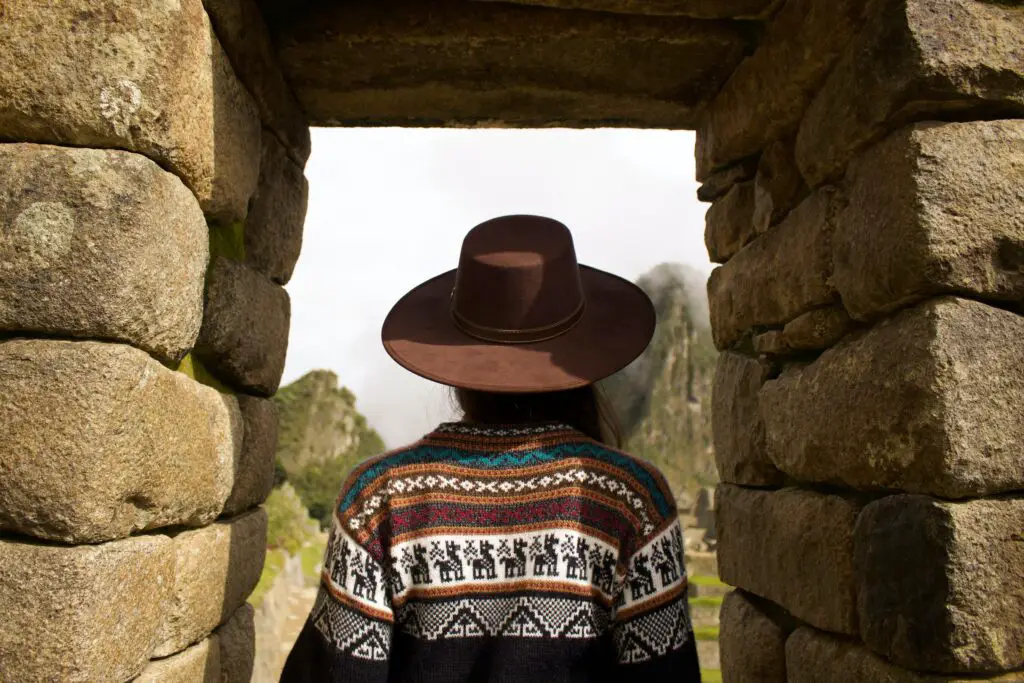
Estimates of Machu Picchu population differ, but the permanent population is generally not considered large. As historian Brian Haughton notes, “Only about 1,000 people were estimated to have lived in and around Machu Picchu at any time , suggesting, along with its remote location, that it could not have been a traditional settlement.”
What Was Machu Picchu Used For?
Ever since Hiram Bingham’s rediscovery of Machu Picchu in 1911, various theories have been put forward as to what Machu Picchu was used for. Bingham’s Machu Picchu theories helped set the tone of debate for the following 50 years, but have since been displaced or disproved, at least in part, by more thorough archeological investigations.
The idea of Machu Picchu as a fully functioning city has been largely dismissed (it could not have supported a long-term population of much more than 1,000 people), leaving a handful of prevailing theories as to its primary purpose.
Machu Picchu: Inca Fortress
Bingham believed that the Incas built Machu Picchu primarily for defensive reasons. The site certainly meets many of the traditional requirements of a defensive post. It sits perched atop a mountain, whose steep sides lead down into deep canyons cut by fast flowing rivers, a natural first line of defense.
Furthermore, access to the site is via narrow Inca trails, often with precipitous drops into the canyons below, another deterrent to invasion or siege. Finally, the numerous walls of Machu Picchu, combined with defensive terraces and a dry-moat, certainly point towards a military design, that of a mountaintop fortress built for defensive reasons.
Machu Picchu: Religious Significance
Despite the evidence for a fortified location, the walls of Machu Picchu are not the rough-cut blocks of a simple military outpost. Bingham himself was fully aware of the grandeur of Machu Picchu, and did not see the site in a purely militaristic light, noting the presence of various temples and ceremonial constructions. Later, however, archeologists would sway much further towards the idea of Machu Picchu being primarily a religious site.
Historian Luis G. Lumbreras, former director of Peru’s National Institute of Culture, sees the walls surrounding Machu Picchu’s urban area in a ceremonial, rather than defensive, context, “not as part of a military fortification, rather as a form of restricted ceremonial isolation” (Lumbreras, Machu Picchu). For historians such as Lumbreras, therefore, Machu Picchu’s temples, and the site’s religious significance, outweigh any defensive preoccupations.
The Temple of the Sun, the Room of the Three Windows and the Temple of the Intihuatana (believed to function as a solar calendar or clock) provide ample evidence of Machu Picchu’s religious importance. Whether the site was primarily a ceremonial center, however, is still subject to debate.
Machu Picchu: Administrative Center
Archeologists have also labeled Machu Picchu as an Inca llacta or tambo, a center devoted to the control and administration of newly conquered regions. Again, however, the grandeur of Machu Picchu would seem to rule against such a purely practical role. Furthermore, according to archeologists Richard L. Burger and Lucy Salazar-Burger, both Machu Picchu’s location and its strongly religious character “set it apart from the administrative way stations called tambos that the Incas had set up along their 50,000-kilometer (more than 30,000 miles) road network.”
Machu Picchu: Inca Estate
Since the mid-1980s, research carried out by the likes of John Howland Rowe, Mariá Rostworowski, Richard Burger and Lucy Salazar-Burger has provided strong evidence to suggest that Machu Picchu was a royal estate, a “pleasure palace” for the Inca elite.
According to Rowe, the entire area surrounding Machu Picchu, including the site itself, belonged to the Inca emperor Pachacuti (also known as Inca Yupanqui or Pachacutec). In 1986, Rowe discovered a 1568 document in which the site “Picchu” was recorded, the location of which would appear to fall within the Inca’s private estate.
Rowe’s discovery seemed to support contemporaneous archeological research carried out by Richard Burger and Lucy Salazar-Burger. In an article originally published in Discovery in 1993, Burger and Salazar argued that Machu Picchu did not resemble any of the five major settlement types in the Inca Empire (the Inca capital, provincial capitals, tambos, rural villages/agricultural sites, or Inca tribute settlements), but did have features consistent with one special type of settlement, that of the royal estate.
Burger and Salazar suggested that the Inca nobility left Cusco during the cold weather of the Andean winter, taking refuge in the royal retreat of Machu Picchu. Here, “members of the Incan royalty relaxed, hunted, and entertained foreign dignitaries and other guests in Machu Picchu’s warmer and more pleasant climate.”
What Was Machu Picchu?
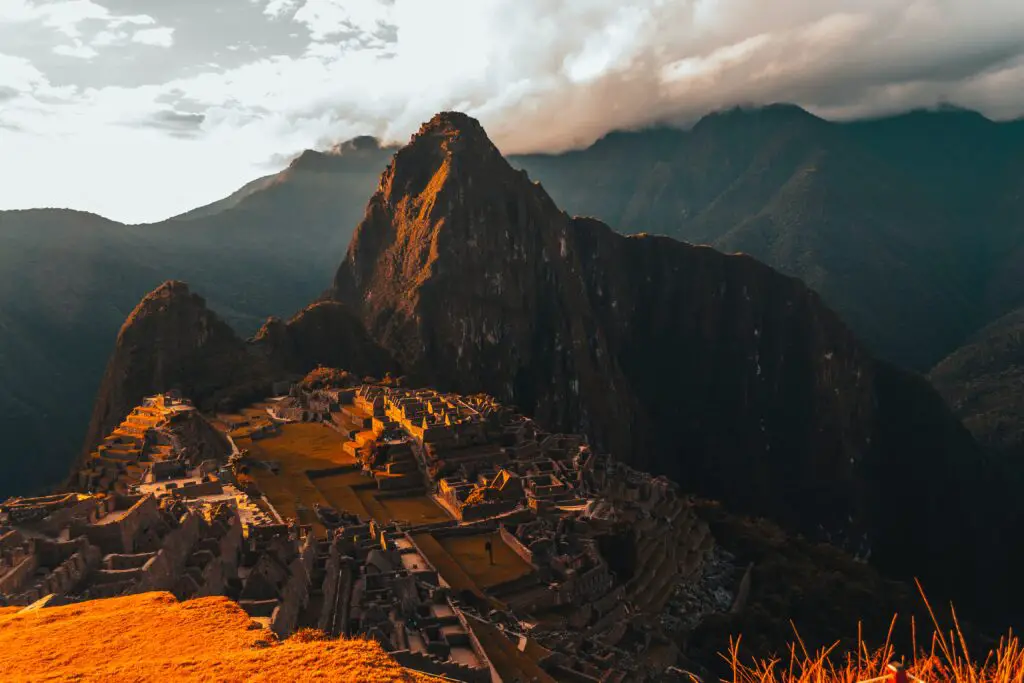
For now, at least, the idea of Machu Picchu as a royal retreat remains the most widely accepted theory. Beyond the supporting archeological evidence obtained by the likes of Burger, Salazar and Rowe, the idea has perhaps gained such a strong foothold due to its inclusive nature in light of previous theories.
What functions, after all, would an Inca ruler desire from his stately retreat? In all probability, he would require a degree of fortification, the ability to continue his religious and ceremonial duties, and all the necessary tools for the administration of both his estate and his empire. Of course, all of these roles have been put forward individually as possible answers to the question, “What was Machu Picchu?”
Where is Machu Picchu Located?
Machu Picchu lies on the eastern slopes of the Vilcanota mountain range above the Urubamba Valley, about 75 km northwest of Cusco, the former Inca capital. The site sits 2,430 meters (7,970 feet ) above sea level.
Tips for Visiting Machu Picchu
A highlight of any trip to Peru is definitely Machu Picchu. The ruins, nestled into the mountains above the Sacred Valley outside of Cuzco are every bit as epic in real-life as in postcards. The lost Inca city is fascinating both for its history and for the natural beauty that surrounds it.
How to Get to Machu Picchu
The classic way to get to Machu Picchu is via the Inca Trail. This trek takes 3 days and must be booked well in advance. The hike is difficult, but porters carry the majority of the weight. Hikers sleep in tents but it is not all roughing it, trekkers are accompanied by cooks and the porters set up the tents for the clients.
There is also the alternative Inca Trail, which also takes 3 days, is much less expensive and can be booked the day before departure. The trip includes hiking and biking and is geared to the budget tourist. Hikers sleep in hostels along the way.
A final option to reach the Inca ruins is via bus from Cuzco to Ollantaytambo and from there a train to Aguas Calientes.
How to Get to the Ruins from Aguas Calientes
It is not an easy hike, but it is a memorable experience to hike from Aguas Calientes to Machu Picchu. If a traveler wants to do this, it is best to set out at about 4:30 in the morning. The stairs are steep and dark so it is a good idea for a hiker to bring a flashlight. It is beautiful to hike up the mountains through mist as the sky begins to lighten.
If the stairs are too difficult, travelers can catch a bus for about 7$ one-way from the city of Aguas Calientes to Machu Picchu. The buses are frequent and take around 20 minutes.
Visiting Huayna Picchu
Huayna Picchu means Young Peak. It is the mountain that overlooks the ruins. This is a steep climb but well worth the effort. The mountain is free to climb, but only 400 tickets are given out to do this each day. If hikers want to climb this mountain, it is recommended that they get to the park when it opens at 7am and go directly to the gate of Huayna Picchu to get their ticket.
Visiting the Sun Gate at Machu Picchu
Not many people go to the Sun Gate so it is a great way to get away from the crowds that seem to gather at Machu Picchu. The hike takes about 45 minutes. It is uphill but nowhere as steep as the stairs to Machu Picchu or hiking up Huayna Picchu.
The Sun Gate itself is small, but from there the views of Machu Picchu and the surrounding mountains are spectacular.
Sights not to be Missed at Machu Picchu
- The Guard House: This is where the classic photo of Machu Picchu is taken. Most of the post-card views are from this vantage point and it is a good place to see the “face” in the rocks behind the ruins.
- Temple of the Sun: One of the most important parts of the ruins of Machu Picchu, the Sun Temple is where religious ceremonies took place and well worth a visit.
- The Palace:Where the king lived is one of the more house-like dwellings in the ruins and has the only private bathroom in the kingdom.
Of course there are many more sights to see so travelers should be sure to allow plenty of time to explore the ruins.
Machu Picchu Alternative Trek
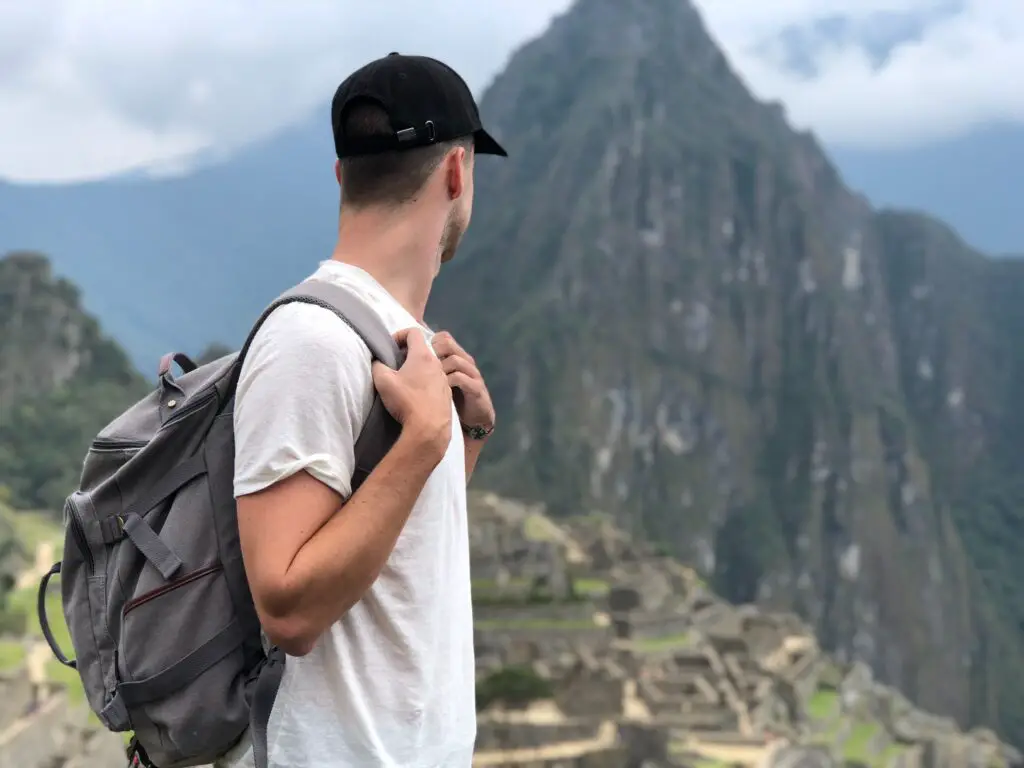
Machu Picchu, one of the highlights of Peru, is an experience not to be missed. But the traditional way of hiking there, via the Inca trail is expensive and must be booked months in advance. This can be challenging for a backpacker who wants to do things cheaper and for whom planning months in advance is not an option.
The alternative Machu Picchu trek can be booked the day before a budget traveler wants to leave. It is also less expensive to go on an alternative Machu Picchu trek for 4 days and 3 nights than just to visit the site by train in one day, so it is a great option for a backpacker who wants to make the most of their money.
There is no shortage of companies offering tours to Machu Picchu from Cuzco and they all have similar itineraries so it is a good idea for the budget-conscious traveler to shop around. Prices and quality vary a great deal. There is no camping on the alternative treks, hikers stay in simple hostels along the way.
So what can an independent traveler expect on an alternative Machu Picchu trek?
Mountain Biking on the Machu Picchu Alternative Trek
On the first day, travelers depart with their chosen company for a day of mountain biking. Most companies stop in Ollantaytambo and drive through the Sacred Valley. This is not a drive for the faint-of-heart or someone who is afraid of heights, but the views are spectacular.
After about 3 hours, tours are allowed to get out of the van and onto the mountain bikes. Time varies, but most groups will bike for about 4 hours. The majority of the road is paved but at the end bikers will ride over a gravel road. From the end of the bike ride it is a thirty minute drive to Santa Maria where tours will spend the night.
Hiking on the Machu Picchu Alternative Trek Trail
The hike is long on the second day but it allows for some of the most spectacular views. Most groups hike for 9 hours, but there is plenty of built-in rest time for hikers. Hikers will walk along steep trails and above the river, winding their way through small villages. With most companies, hikers can rest their feet and soak sore muscles at local hot springs at the end of the day which makes for a pleasant way to relax after a long hike.
The second night is spent in Santa Teresa. This town is small but equipped with grocery stores, a pharmacy and even internet access if any of those amenities are desired.
Hiking the Alternative Inca Trail to Aguas Calientes
The hike on the third day is mostly along a dirt road and railroad tracks. The hike itself is mostly flat, therefore much easier than on the previous day of the trek.
Most groups will arrive in the city of Aguas Calientes in the evening. This city is the jumping-off point for Machu Picchu and has plenty of nice restaurants and hotels. The train that takes most tourists to Machu Picchu arrives in Aguas Calientes. It is a busy city with a large river running through it.
Aguas Calientes to Machu Picchu
For most groups it is an early start on the fourth day to go to Machu Picchu. Travelers can hike up the many stairs to the park or take a bus. The day is spent exploring the ruins. Most groups will offer a tour in the morning to the major sites.
In the afternoon, hikers will take a train from Aguas Calientes back to Ollantaytambo where they will catch a bus back to Cuzco arriving late in the evening where the alternative Machu Picchu trek finishes.

It’s not a matter of where, but when. Time is precious and my time spent living and experience the cultures of this world is what I lust for. This is why I created this website, to share true, genuine experiences and not just typical touristy info. Travel, the love of coffee, and food!
